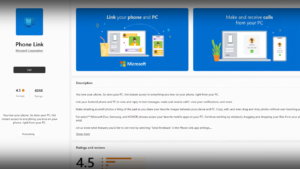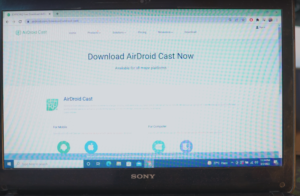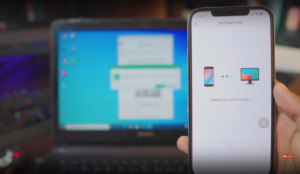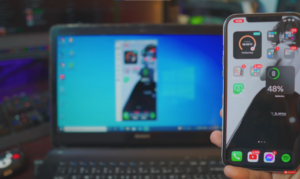In today’s digital age, the seamless connection between our smartphone and laptop is paramount for productivity, data transfer, and overall convenience. Whether you want to transfer photos, backup data, or simply access your iPhone files on a larger screen, establishing a connection between your iPhone and laptop is essential. In this comprehensive guide, we’ll walk you through the steps to connect your iPhone to a laptop, ensuring a smooth and problem-free. experience.
Understanding the Basics Of Connect iPhone to Laptop:
Before dip into the connection process, it’s crucial to understand the different methods available for linking your Apple iPhone to a laptop. normally there are three primary approaches:
USB Cable Connection: Utilizing a USB cable to mundanely connect your iPhone to your laptop.
Wireless Connection: Establishing a wireless connection via Bluetooth or Wi-Fi.
Cloud Services: Using cloud-based services such as iCloud or Google Drive to sync data between your iPhone and laptop.
Connecting Your iPhone to a Laptop via USB Cable:
The USB cable connection method is one of the most straightforward ways to link your iPhone to a laptop. Here’s a step-by-step guide:
Gather the required Equipment: Ensure you have a peaceful USB cable for your iPhone model and a functioning USB port on your laptop.
Unlock Your iPhone: Unlock your iPhone using your passcode or Face ID/Touch ID.
Connect the USB Cable: Plug one end of the USB cable into your iPhone’s charging port and the other end into an available USB port on your laptop.
Trust This Computer: Upon connecting your iPhone to the laptop for the first time, you may see a responsive on your iPhone asking if you trust this computer. Tap “Trust” to establish a secure connection.
Access Your iPhone: Once connected, your iPhone should appear as a device in your laptop’s file explorer or iTunes application, depending on your operating system.
Transfer Files: You can now transfer photos, videos, music, and other files between your iPhone and laptop by overlong and declining them into the appropriate folders.
authorize a Wireless Connection:
If you prefer a cable-free solution, you can connect your iPhone to a laptop wirelessly via Bluetooth or Wi-Fi. Here how:
Enable Bluetooth or Wi-Fi: On both your iPhone and laptop, ensure that Bluetooth or Wi-Fi turned on.
Pairing via Bluetooth:
On your iPhone, go to Settings > Bluetooth and toggle it on.
On your laptop, navigate to the Bluetooth settings and declare it’s turned on.
Follow the on-screen direction to pair your iPhone with your laptop.
Connecting via Wi-Fi:
On your iPhone, go to Settings > Wi-Fi and connect to the same Wi-Fi network as your laptop.
On your laptop, declare that Wi-Fi is ready and connected to the same network.
Your iPhone should now be visible as a interrelated device on your laptop.
Access and Transfer Files:
Once connected via Bluetooth or Wi-Fi, you can access your iPhone’s files on your laptop and transfer data as needed.
Utilizing Cloud Services for Connection:
Cloud services offer a convenient sync data between your iPhone and laptop without the need for direct physical or wireless connections. Here’s how to use iCloud as an example:
Set Up iCloud on Your iPhone:
Go to Settings > [Your Name (Hiphonest.com)] > iCloud .
Sign in with your Apple ID and enable the desired iCloud features, such as iCloud Drive, Photos, and more.
Access iCloud on Your Laptop:
Open web browser on your laptop and navigate to iCloud .com.
Sign in with the same Apple ID used on your iPhone.
You can now access and manage your iCloud data, including photos, documents, and more, directly from your laptop.
Sync Data:
Any changes or additions made to your iCloud data on then your iPhone or laptop will automatically sync around all your devices connected to iCloud For Connect iPhone to Laptop.
Tips for a graceful Connection Experience:
Keep Software Updated: declare that both your iPhone’s operating system (iOS) and your laptop’s operating system (macOS or Windows) are up to date to avoid peaceful issues.
Use Genuine Accessories:
When using a USB cable for connection, opt for genuine Apple-certified cables to prevent potential damage to your devices.
Secure Your Connection: If transferring sensitive data, consider using encrypted connections or secure cloud services to protect your information from unauthorized access.
Troubleshooting: If you encounter any connectivity issues, restart your devices, ensure that all settings are configured correctly, and refer to the manufacturer’s support resources for guidance.
Conclusion:
Connecting your iPhone to a laptop opens up a world of possibilities for data transfer, backup, and seamless incorporation between devices. Whether you prefer the simplicity of a USB cable, the convenience of wireless connections, or the workability of cloud services, establishing a connection is easier than ever. By following the steps outlined in this guide and keeping a few best practices in mind, you can ensure a smooth and efficient connection experience that enhances your productivity and workflow.







This was beautiful Admin. Thank you for your reflections.